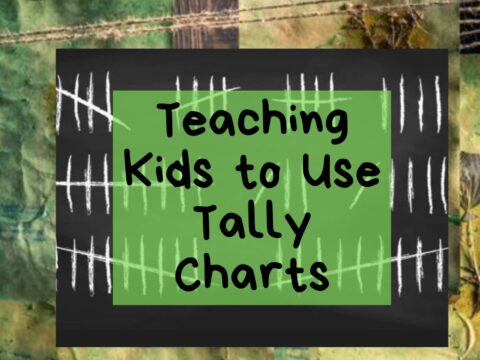Wondering how to get your students upbeat about learning math? Read how math teachers use modern tools, technologies, and techniques to teach the subject, from one of our Ask a Tech Teacher contributors:
How To Boost Student Engagement: Modern Tools for Math Teachers
Prospective teachers researching online teaching certification and hoping to learn all they can about being a math teacher will do well to include tech tools in their quest for knowledge. Modern educational tools make it possible to add a practical edge to math lessons, as students can observe math structures at play in the real world and see how people apply these formulas to solve common challenges.
Why Incorporate Technology In Math Education
With smart technology becoming an integral part of everyday life, the average student interacts with different technologies day-to-day. A math teacher has a better chance of holding students’ attention during class time if they make technology part of the lesson.
U.S. Department of Education reports show that technology can potentially transform education. Not only that, but it also has a positive impact on learners. These same reports show that teachers and students stand to gain these additional benefits:
- Learners get a chance to apply mathematical solutions to everyday problems
Teachers can stimulate real-life situations where regular people and professionals use math formulas to solve problems. Seeing math solutions in application fosters a deeper understanding of how these formulas work and help learners grasp concepts better.
- Learners achieve higher achievement scores in math
One 2016 randomized study by Roschelle et al found that students attained higher achievement scores when teachers combined one-on-one attention and web-based homework tools. According to the study, learners who only received teacher training and did not engage with the online learning tools had poorer achievement scores.
- Teachers enjoy a boost in student engagement
The use of interactive technology helps make lessons fascinating. And as learners interact with and manipulate these tools, they become more involved and engaged in the lesson.
These findings may be what a teacher needs to go on an all-out tech discovery journey. But where to start? Don’t worry; we have a list of tools to help you get started.
Modern Tools and Techniques for Math Teachers
Nothing teaches one how to become a math teacher quite like modern technology. It’s fun and engaging, and there’s always something new to learn. Maybe even a new way to present information to the learners every time.
And if you’re looking to enroll in one of the online teaching certification programs available, learning how to use technology while teaching will seem like a natural next step. Let’s discuss some of the tools and techniques math teachers can use in the classroom today.
Computers & Mobile Devices
Computers and mobile devices like smartphones and tablets are the primary way learners access the internet. Through these devices, students access web-based study tools, simulation tools, and apps where they can interact with their teachers and fellow students.
The majority of learners are comfortable using their personal devices to access schoolwork. Where this isn’t an option, they can use school computers and tablets—a viable option as 94% of U.S. public schools provide students with computers.
Data Analytics Tools
Adding data analytics tools allows students to solve problems using real data. Things like calculators, spreadsheets like Microsoft Excel and Google Sheets, and other data analytics software are all useful in getting learners to test techniques like hypotheses and regression analysis and make predictions.
Visualization Tools
Imagery is a powerful tool for learners to show their interpretation of math concepts. The teacher can then assess how well the students know the concepts by analyzing the visuals they come up with.
Depending on grade level, learners can use these visuals to show conceptual knowledge:
- Graphs
- Patterns
- Tables
- Charts
- Images
- Animations
- Diagrams
Symbolic Algebra Systems
SAS are computer algebra systems used to manipulate symbolic equations. Teachers can use these to guide students in handling complicated math formulas. These systems are also helpful in teaching learners how to graph equations.
There are plenty of CAS software suitable for classroom use, including Wolfram Mathematica, MatLab (student version), Macsyma, and Axiom.
Interactive Geometry Tools
Students can learn how to create and manipulate geometric shapes and constructions using interactive geometry tools. Younger learners start from the basics with lines, points, and circles. They learn how to move these different elements to form various shapes. Older learners can get into plane geometry and the study of predetermined shapes.
Videos
Some students grasp ideas better when delivered in video form. And even students who prefer reading text will learn something from a video. There are different ways to incorporate video into a math class. The simplest is finding instructional videos and getting the class to watch them. Later, discuss what everyone learned and why they think the video was an effective instructional tool.
The teacher can also divide students into groups and assign them different math problems. Have them video themselves as they solve the problem—from troubleshooting to each step they follow in solving the problem. They can choose to record their short video as a simple documentation of the process or record themselves as they solve the problem in front of the class.
If the teacher is creatively inclined, they can create fun animations that explain the concept in simple terms. They can do it alone or engage the students in creating the film to make it a fun project for everyone.
Games
Different games can help learners improve their math skills. From card and board games to video games, teachers can choose from a selection of games with varying challenge levels.
Depending on the learners’ ages, teachers can use games to help students improve logic, reasoning, memory, counting skills, spatial awareness, number identification, and learn how to keep track of things.
Web-based Applications
Teachers can use the many web-based educational tools to plan and deliver lesson plans, activities, homework, and even exams. Besides providing the tutor with a seamless way to work and track progress with their learners, this technique is also time efficient. It frees up the teacher’s time so they can concentrate on areas that need their attention more. And it’s a great way to get more done.
Using web-based technologies, teachers can invite experts in mathematics to share their knowledge with the class. Conferencing tools and video calls are examples of ways that teachers can have professionals and other tutors join the class. Having them take over the lesson or participate in a Q&A with the students is one way to expose learners to different perspectives and expand their knowledge base.
Conclusion
Technology gives math tutors a way to present mathematical structures in a fun, memorable, and often practical way. By using the above tools, teachers can guide their students through the theoretical and practical application of math, making learning easier for their students.
Here’s the sign-up link if the image above doesn’t work:
Jacqui Murray has been teaching K-18 technology for 30 years. She is the editor/author of over a hundred tech ed resources including a K-12 technology curriculum, K-8 keyboard curriculum, K-8 Digital Citizenship curriculum. She is an adjunct professor in tech ed, Master Teacher, webmaster for four blogs, an Amazon Vine Voice, CSTA presentation reviewer, freelance journalist on tech ed topics, contributor to NEA Today, and author of the tech thrillers, To Hunt a Sub and Twenty-four Days. You can find her resources at Structured Learning.







































Those seem like great tools. Mathematics, science and technology have become such important topics in modern education.